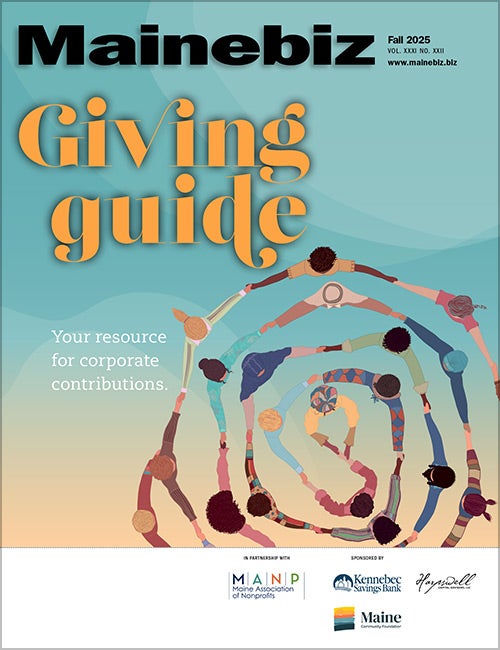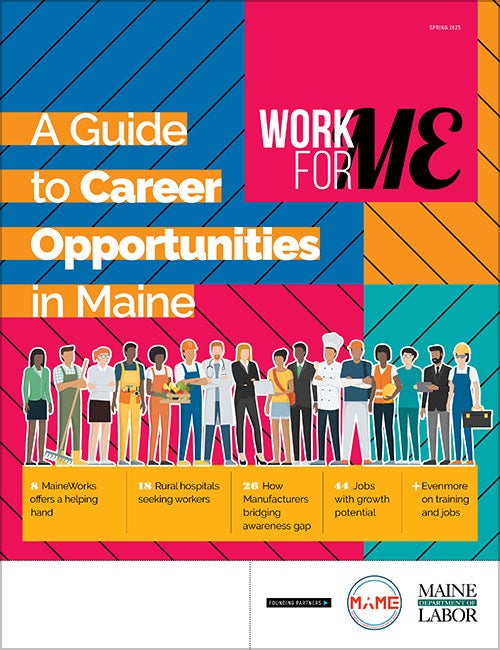
Processing Your Payment
Please do not leave this page until complete. This can take a few moments.
- News
-
Editions
View Digital Editions
Biweekly Issues
- December 1, 2025
- Nov. 17, 2025
- November 03, 2025
- October 20, 2025
- October 6, 2025
- September 22, 2025
- + More
Special Editions
- Lists
- Viewpoints
-
Our Events
Event Info
Award Honorees
- Calendar
- Biz Marketplace
How to use AI to create content with copyright protection in mind

Generative AI has revolutionized how businesses create content, from marketing copy to product descriptions to blog posts and internal reports.
While these tools offer unprecedented efficiency and creativity, smart implementation requires understanding how to use them strategically while protecting your business interests.
One critical and evolving legal consideration business must take into account is copyright. Who owns the output of generative AI? Can it be copyrighted? And what risks exist when publishing or using AI-generated content commercially?
In the United States, copyright law protects “original works of authorship” created by humans. Current law generally does not recognize works without human authorship — works that are created by animals or chatty AI bots — as eligible for copyright protection.
If your business uses AI to generate content, whether it’s code, marketing copy or illustrations, your business may not automatically own the copyright. In other words, if no human authorship is clearly involved in the creation of the work, the work may not be copyrightable.
However, if you, a staff member or an independent contractor (i.e., a human) contributes creative input that shapes the output in a meaningful way, that portion of the work may be eligible for protection. With this in mind, here are some pointers on leveraging AI content creation effectively, safely and with copyright protection in mind.
Create content with human involvement
Edit, rewrite or combine the AI output with original human-created content. The more human contributions to the content, the more likely the content will be eligible for copyright protection (and the more authentic the content will feel to readers). Be sure to document your contribution, particularly if you plan on applying to register the copyright to the content
Avoid AI-only visual assets
Use your own work, like a drawing or a photograph, as part of the prompt and instruct the AI tool to enhance or otherwise incorporate the original work in its entirety.
Just as effective, use AI for generating ideas or prototyping and have a designer refine the image or, better yet, create an original image based on the AI prototype. Make sure to retain the version history or otherwise document individuals’ contribution, to show human authorship and development over time.
Verify that the work is non-infringing
Implement simple processes to verify that your AI-generated content doesn’t inadvertently reproduce existing material. For written content, use plagiarism detection tools and perform quick searches for unique phrases before finalizing the content. For visual assets, conduct a reverse image search.
Similarly, avoid prompts that ask the AI to write like a particular author or to produce an illustration in the style of a well-known artist. Indeed, certain AI platforms, like Adobe’s Generative AI, prohibit prompts that are “intended to generate output that is substantially similar to a third party’s copyrighted work.”
Review terms
Before adopting any AI tool for your business, be sure to review the platform’s terms. Each platform’s terms are different, and enterprise-focused AI platforms may have additional protections and clearer terms of service that benefit business users.
Clear communication
Clearly communicate how and when your company uses generative AI. Create internal guidelines that specify when AI use is appropriate and when human-only creation is preferred.
High-stakes communications, sensitive topics and brand-critical content may warrant human-first approaches, particularly given they are most likely to be registered with the Copyright Office, while routine content may benefit from AI collaboration.
Treat content with caution
Generative AI offers a powerful tool for enhancing creativity and productivity, but businesses must treat any AI-generated content with caution.
By treating AI as a powerful creative partner rather than a replacement for human judgment and creation, your business can harness these transformative tools while protecting your intellectual property and building sustainable competitive advantages.
About the author
Becky Lessard is an intellectual property attorney at Verrill in Portland. She can be reached at rlessard@verrill-law.com.
Mainebiz web partners
Related Content

The Giving Guide
The Giving Guide helps nonprofits have the opportunity to showcase and differentiate their organizations so that businesses better understand how they can contribute to a nonprofit’s mission and work.
Learn More
Work for ME
Work for ME is a workforce development tool to help Maine’s employers target Maine’s emerging workforce. Work for ME highlights each industry, its impact on Maine’s economy, the jobs available to entry-level workers, the training and education needed to get a career started.
Learn More
Groundbreaking Maine
Whether you’re a developer, financer, architect, or industry enthusiast, Groundbreaking Maine is crafted to be your go-to source for valuable insights in Maine’s real estate and construction community.
Learn more-
The Giving Guide
The Giving Guide helps nonprofits have the opportunity to showcase and differentiate their organizations so that businesses better understand how they can contribute to a nonprofit’s mission and work.
-
Work for ME
Work for ME is a workforce development tool to help Maine’s employers target Maine’s emerging workforce. Work for ME highlights each industry, its impact on Maine’s economy, the jobs available to entry-level workers, the training and education needed to get a career started.
-
Groundbreaking Maine
Whether you’re a developer, financer, architect, or industry enthusiast, Groundbreaking Maine is crafted to be your go-to source for valuable insights in Maine’s real estate and construction community.
ABOUT
NEW ENGLAND BUSINESS MEDIA SITES
No articles left
Get access now
In order to use this feature, we need some information from you. You can also login or register for a free account.
By clicking submit you are agreeing to our cookie usage and Privacy Policy
Already have an account? Login
Already have an account? Login
Want to create an account? Register
Get access now
In order to use this feature, we need some information from you. You can also login or register for a free account.
By clicking submit you are agreeing to our cookie usage and Privacy Policy
Already have an account? Login
Already have an account? Login
Want to create an account? Register











0 Comments